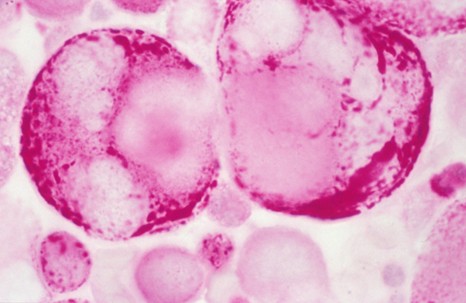Press Contact
Institut CurieCatherine Goupillon-Senghor
01 56 24 55 23 / 06 13 91 63 63
rf.eiruc@esserp.ecivres
Presse
rf.mresni@esserp
Thanks to work done at Institute Curie by a team led by Fatima Mechta-Grigoriou, Inserm Research Director, it is now possible to identify, among women with aggressive ovarian cancer, those who could benefit from a promising targeted therapy.
Métastase tumorale dans l’ovaire © Inserm/Evrard, Gilles.
The Stress and Cancer team (an Inserm/Institut Curie team designated by the French National Cancer League), directed by Fatima Mechta-Grigoriou (photo, right), has just taken a major step toward identifying women with an aggressive form of ovarian cancer who are likely to benefit from targeted therapy in the form of a MEK inhibitor.
Finding the Achilles heel of ovarian tumour cells
Moreover, BRAF activates the MEK signalling pathway[1] involved in the development of low-grade ovarian tumours. MEK inhibitors have therefore been proposed as a possible therapeutic solution for these cancers.“75% of ovarian cancers are high grade, i.e. highly aggressive. The mutation profile differs between low- and high-grade tumours,” explains Virginie Mieulet (photo, left), post-doctoral fellow and co-author of this work. “For example, alterations in the KRAS/BRAF oncogenes are present in 70% of less aggressive tumours, but in only 1% of aggressive tumours.”
“The MAP3K8 protein might serve as a biomarker for identifying patients likely to benefit from a therapy based on MEK inhibition,” adds Fatima Mechta-Grigoriou, Inserm Research Director, “especially since it can be quite simply detected from a tissue section by our physician pathologist colleagues, who, incidentally, have helped us greatly in this work.”
While clinical trials are already underway to assess MEK inhibitors in low-grade ovarian cancers, everything seems to point to the interest of developing a clinical trial in women with high-grade ovarian cancer overexpressing MAP3K8, to evaluate the efficacy of this targeted therapy, in addition to the conventional chemotherapies.
[1] Because of the key role of the MEK signalling pathway in carcinogenesis—activation is observed in 30% of cancers—MEK inhibitors constitute a promising therapeutic approach. Clinical trials are currently underway for several tumour locations (skin melanoma, intestinal tumours, thyroid cancer, etc.).